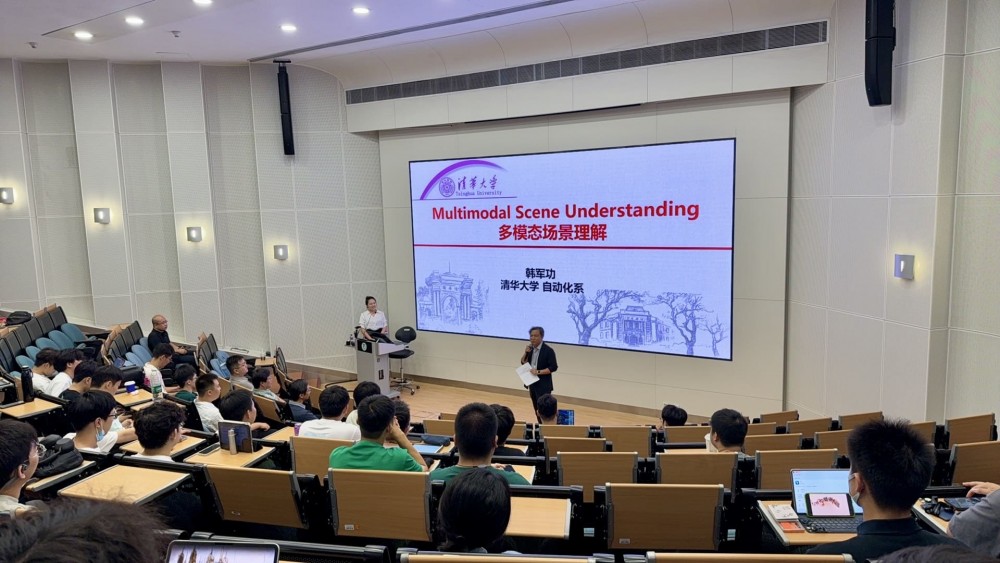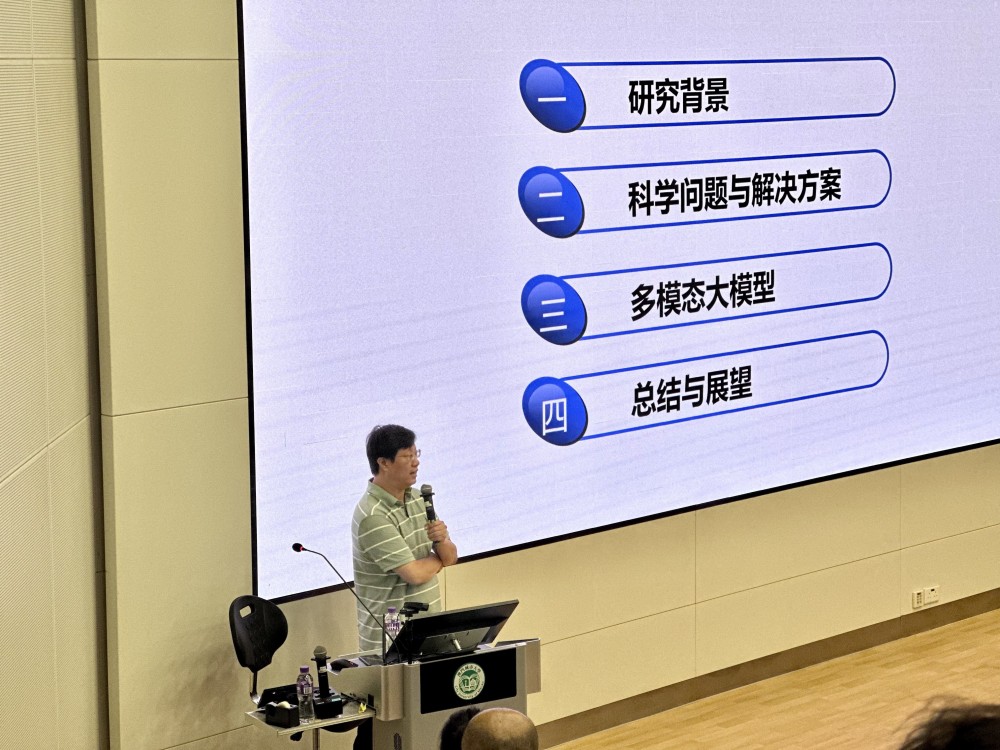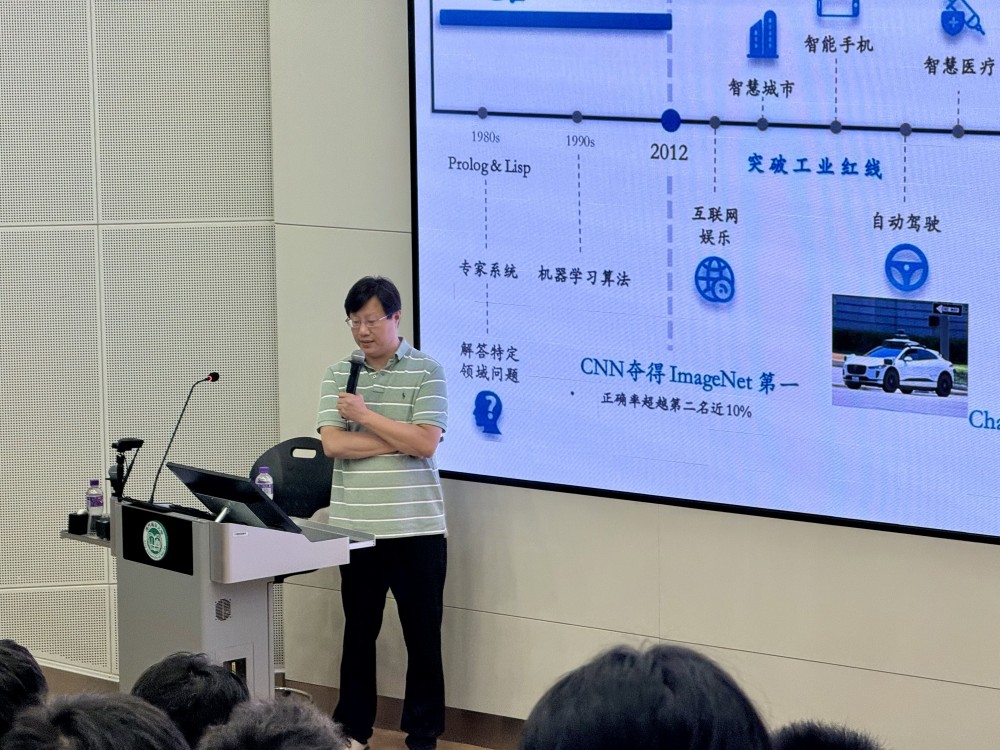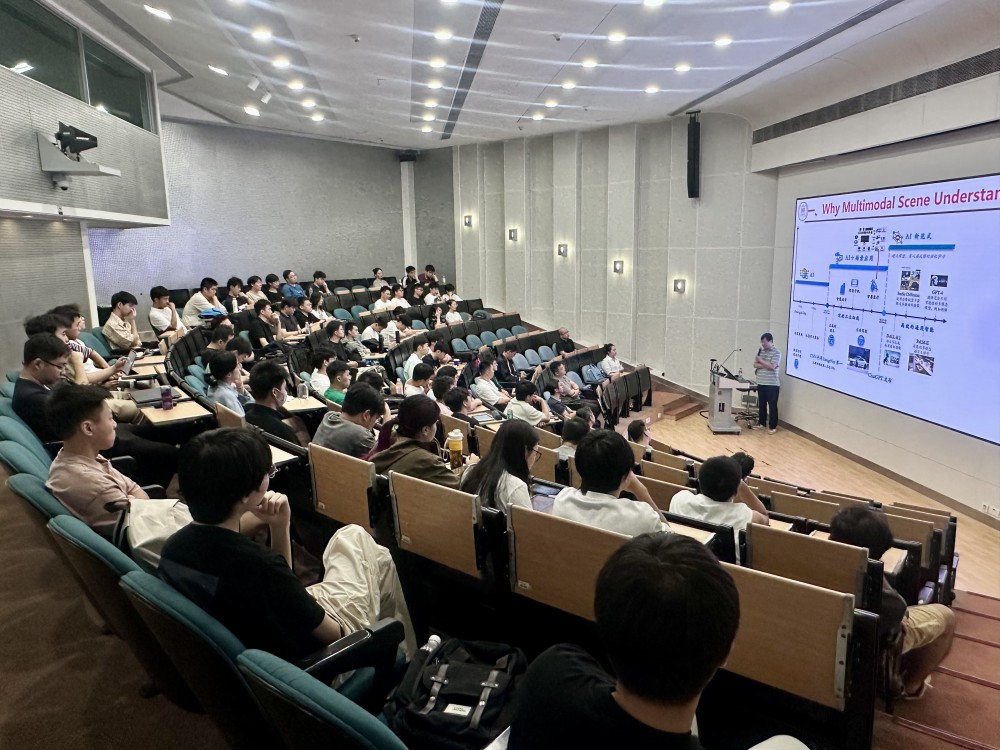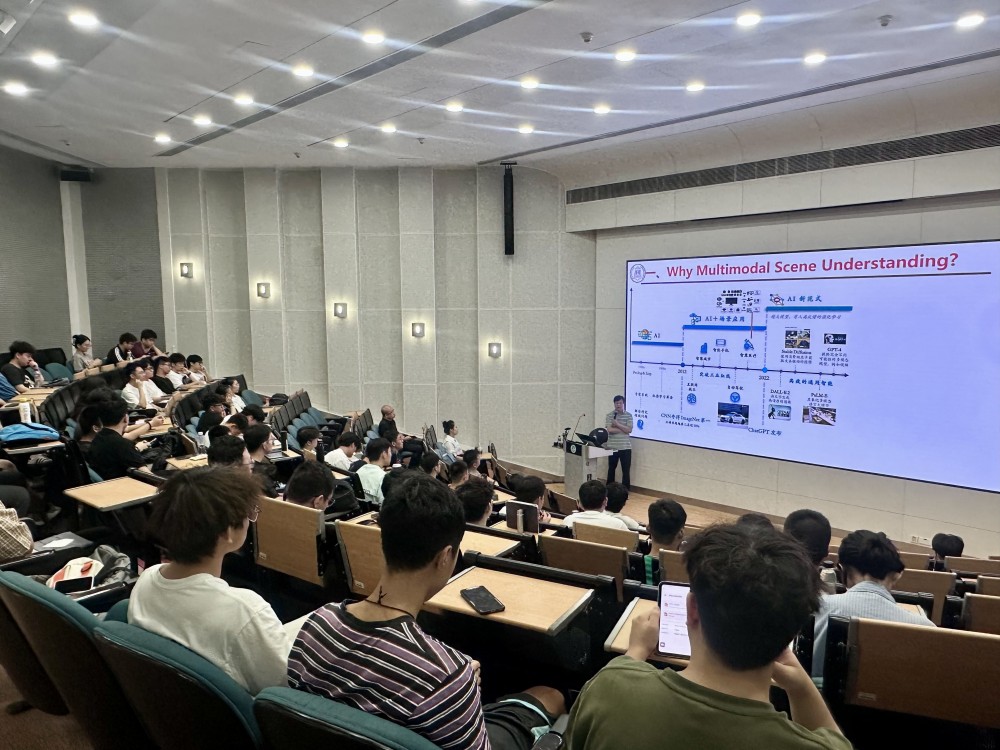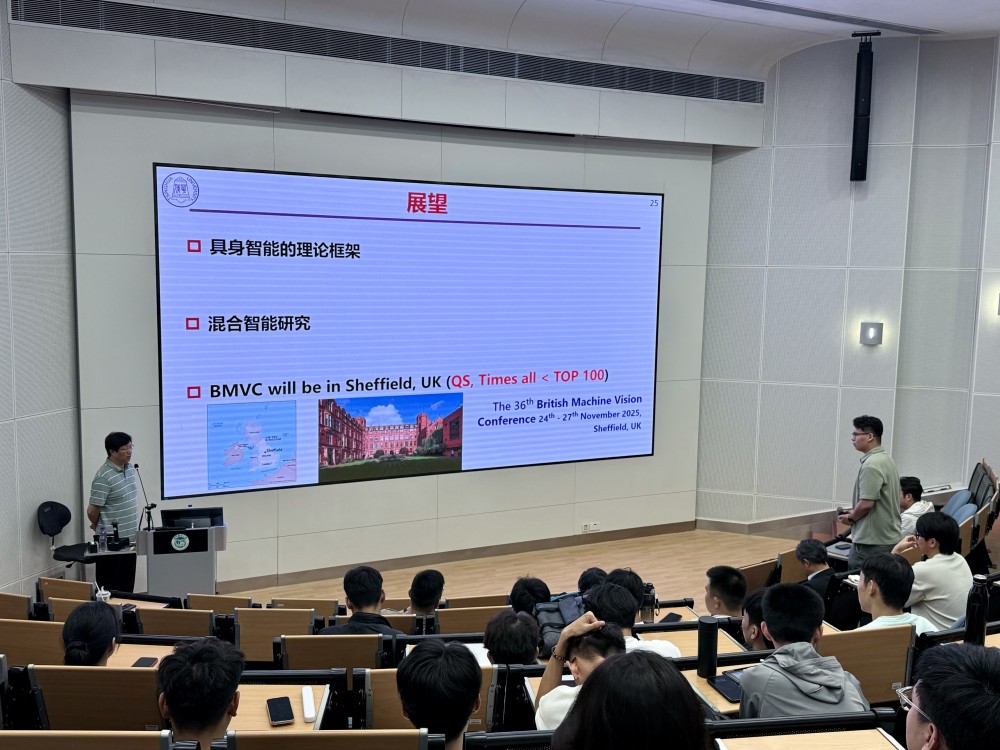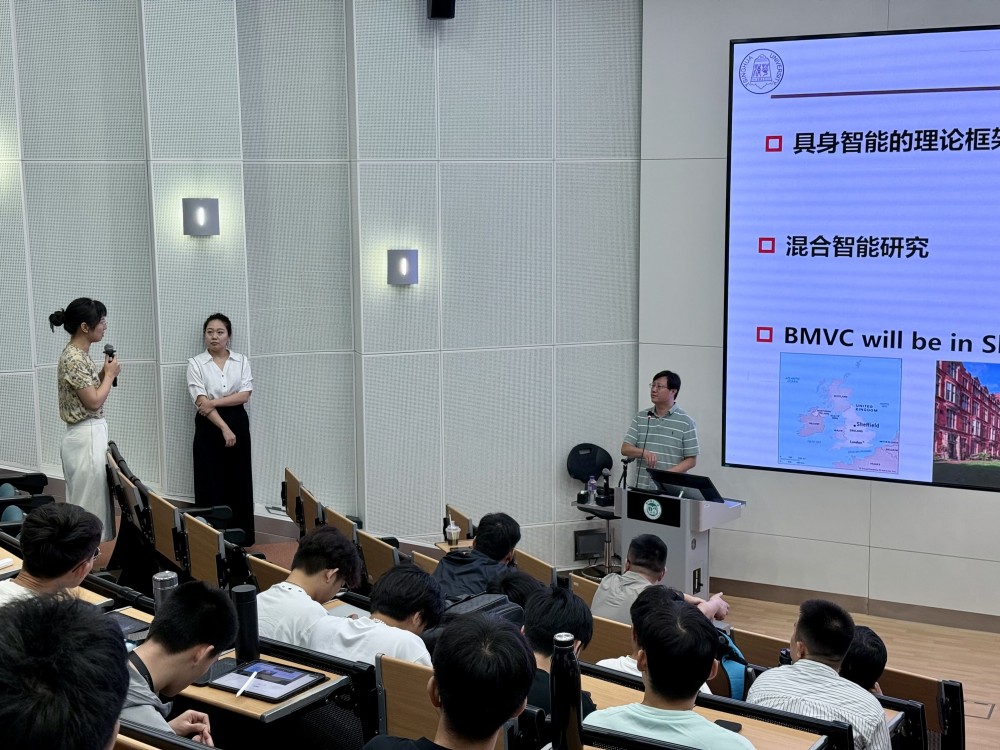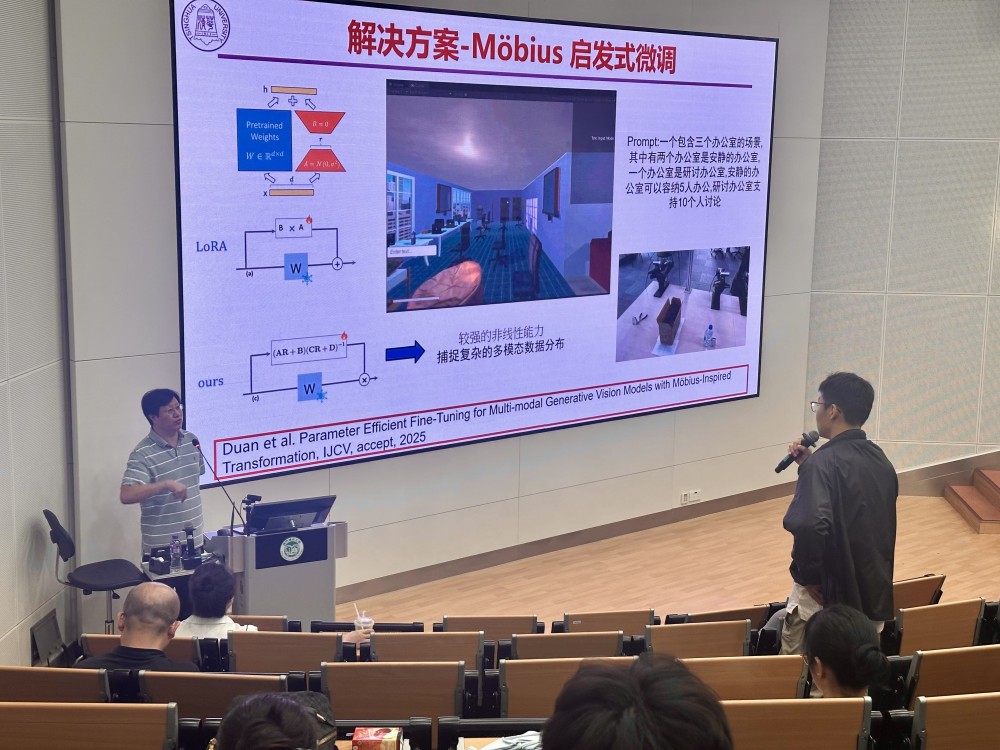At 10:00 AM on September 5, 2025, the Faculty of Data Science at City University of Macau held an academic seminar entitled "Multimodal Scene Understanding" at HG03, Ho Yin Conference Centre. The event featured Professor Han Jungong, Xinghua Chair Professor of the Department of Automation at Tsinghua University, as the distinguished guest speaker. The lecture attracted numerous faculty members and students, who gathered to explore the application prospects of learning-enabled cyber-physical systems in autonomous vehicles and unmanned aerial vehicles.
Professor Han previously served as a Chair Professor in the School of Computer Science at the University of Sheffield, UK, where he led the computer vision research team. Between 2004 and 2024, he held professorial and research positions at several renowned European universities, national research institutions, and international corporations. He has achieved a series of theoretical innovations and technological breakthroughs in areas such as dynamic neural networks, multimodal visual perception, brain-machine learning, and large model optimization.
During the lecture, Professor Han systematically introduced cutting-edge advancements in multimodal scene understanding, offering in-depth explanations on how machines can integrate and reason with multi-source perceptual information—such as visual, auditory, and tactile data—to achieve accurate perception, deep understanding, and natural interaction within complex environments. He outlined the latest progress in model architecture design, multimodal fusion strategies, algorithm optimization, and practical applications, demonstrating how these technologies continue to push the boundaries of traditional perception and cognition, thereby advancing intelligent robots toward higher levels of autonomy and intelligence. Moreover, he provided a thorough analysis of the key challenges and future opportunities in building intelligent systems capable of cross-modal learning, robustness, context-aware capabilities, and human-like understanding.
During the Q&A session, attendees actively posed questions, and Professor Han responded thoughtfully, further enhancing the audience’s understanding of the topics discussed. Although participants came from diverse research backgrounds, they unanimously agreed that the lecture was highly enlightening, not only broadening their academic horizons but also offering valuable insights for practical research. The lively interaction and dialogue between theory and practice inspired new innovative thinking among all present. The event concluded with warm applause, and many expressed that they found it highly rewarding.

